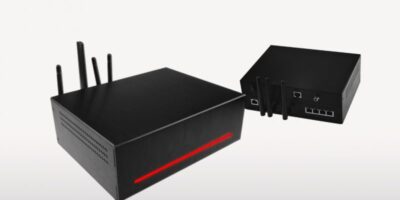Gateway and flexible wireless sensor nodes configure the IoT, says Portwell
Gateway and flexible wireless sensor nodes configure the IoT, says Portwell: Portwell a world-leading technology innovator in the Industrial PC and embedded computing company, Portwell, announces XM-1, the first IoT gateway to feature international patents of highly composable structure.
It has also introduced a series of wireless sensor nodes, DS-1 and DS-1B, supporting Arduino IDE (integrated development environment) and a variety of options for sensors and wireless connectivity.
XM-1 satisfies customers’ requests for an IoT gateway solution that can meet the requirements emerging from an extensive range of IoT applications, says Portwell. As well as a patented modularization mechanism, all of the communication modules can be hot-plugged on-site without removing the system chassis. The XM-1 supports four different communication technologies, namely ZigBee, LoRa, Wi-Fi, 2G/3G/LTE (optional). There are two board choices, an ARM processor-based (offering power saving) and X86 processor-based (for high computing power applications, says Portwell.)
Conventional communications are integrated with optional RS232/422/485, and there is an optional, four-port Ethernet switch.
The XM-1 is designed for applications with “diverse” communication interfaces. Due to local/specific infrastructural challenges, such as transmission distance, geological obstacles, limitation of regulation and/or power consumption, a system integrator might need to deploy a gateway, ideally, designed with various communication interfaces to ensure that data can be collected effectively under the same IoT structure. The modularised design of the XM-1, allows the system integrator to select the communication module/s based on application needs and requirements, instead of preparing several different hardware gateways. For example, intelligent agriculture can use LoRa long range, low power wireless technology for collecting data, plus LTE, high-speed wireless communication to connect to the cloud. In other cases, the system integrator might be required to choose to adopt Wi-Fi instead of LTE, and accordingly the LTE module could be exchanged with a Wi-Fi module. The agile XM-1 modularised IoT gateway saves costs, but also provides flexibility within an evolving IoT world, Portwell believes.
When a communication or connectivity system encounters technical issues, or requires an upgrade, engineers no longer need to open the system/gateway chassis. With its hot-plugging capability, XM-1 facilitates easier maintenance and upgrade. This modular design can dramatically decease the training time for technicians and help the enterprises lower costs and enhance efficiency.
The series of wireless sensor nodes, DS-1 and DS-1B, supporting Arduino IDE support ZigBee, LoRa and Wi-Fi to connect the IoT gateway. They also support sensors with different voltages at the same time. The integrated Lithium battery and solar charging, make the DS-1B suitable for use in constrained spaces. Power saving features include sleep mode and extreme power saving.
The DS-1 series integrates numerous sensors with the electronic and mechanical characteristics, dramatically decreasing circuit and mechanical complexity, says Portwell. The DS-1 series is a flexible sensor node solution that can be used in the smart home, intelligent agriculture and the intelligent factory, using Wi-Fi, LoRa and Wi-Fi and Zigbee communication.
Gateway and flexible wireless sensor nodes configure the IoT, says Portwell
http://www.portwell.de




